White birds in Michigan, like egrets and Snowy Owls, captivate our attention with their mesmerizing presence. Moreover, amidst the multitude of similar-looking white birds such as egrets, herons, and ibis, distinguishing between them can be quite perplexing. So, how can one discern one from the other?
Fear not, for this guide is here to assist you in identifying white birds through both sight and sound. As well as, It will inform you about the times of the year these birds can be found in Michigan, aiding you in narrowing down your options and delving deeper into the world of birds in your vicinity.
White Birds In Michigan By Season
In Michigan, you’ll encounter various white birds throughout the year, each with its own preferred season and habitat. Let’s take a closer look:
Year-round Residents: Among the white birds that grace Michigan’s landscapes all year long are the Ring-billed Gull, Mute Swan, Rock Pigeon, and Trumpeter Swan.
Summer Visitors: As the warmer months roll in, Michigan becomes a temporary home to a different set of white birds, including the Great Blue Heron, Great Egret, Common Tern, American White Pelican, and Snowy Egret.
Winter Guests: When winter blankets the state, certain white birds seek refuge in Michigan, such as the Snow Bunting, Tundra Swan, Snowy Owl, Snow Goose, Ross’s Goose, and Gyrfalcon.
Migration Visitors: During migration periods, Michigan hosts transient white birds like the Cattle Egret, Whooping Crane, and Little Blue Heron, as they journey to their seasonal destinations.
This guide arranges these white birds according to their frequency of sightings, as reported by bird watchers contributing to eBird checklists in Michigan. So, whether you’re by the water, in the woods, or traversing fields, keep an eye out for these majestic white birds and enrich your birdwatching experiences.
1. Ring-billed Gull
Ring-billed Gulls, a common sight in Michigan year-round, make up 17% of summer checklists and 11% of winter checklists compiled by bird enthusiasts across the state.
These medium-sized gulls are easily recognizable by their distinctive features, notably their short, yellow bills adorned with a black ring near the tip. Breeding adults sport a predominantly white plumage, accentuated by pale gray backs and wings with black tips and white spots. Their yellow eyes, outlined with orange, complement their yellow legs and feet. Interestingly, both males and females exhibit similar characteristics.
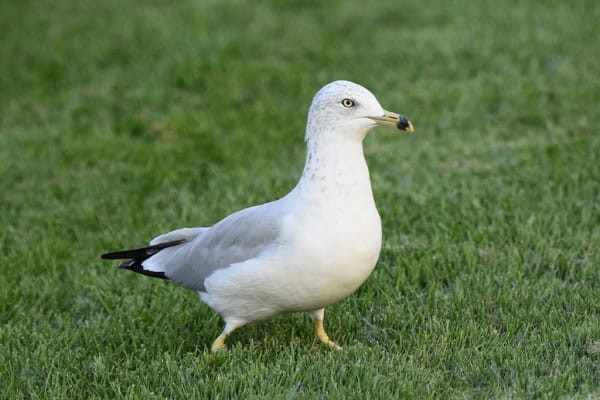
However, non-breeding adults differ slightly, showcasing light brown streaks on their heads and necks. Meanwhile, juvenile Ring-billed Gulls are characterized by brown streaks covering their entire bodies.
Scientifically known as Larus delawarensis, these gulls measure between 18 and 19 inches in length, weighing approximately 20.81 ounces, with a wingspan ranging from 47 to 48 inches. They breed in Canada and northern/northwestern US states, migrating southward for winter to regions such as the southern US, the Pacific Coast, and Mexico.
Ring-billed Gulls are versatile in their habitat choices, thriving in urban, suburban, and agricultural settings. They frequent a variety of aquatic environments, including coastal waters, beaches, lakes, ponds, streams, estuaries, and mudflats. Additionally, they’re often spotted in human-populated areas like parking lots, landfills, shopping malls, and reservoirs, where they tend to congregate in large numbers. Keep an eye out for these adaptable birds during your outdoor adventures in Michigan!
2. Great Blue Heron
During breeding season, Great Blue Herons are commonly sighted in northern Michigan, while some can be spotted year-round in the southern regions of the state, making up 17% of summer checklists and 3% of winter checklists.
These majestic birds, the largest herons native to North America, exhibit a striking appearance. With their very large size and pale gray bodies, they often appear white when soaring through the sky. Their distinguishing features include a white face adorned with a black crest or plume extending from the front of their eyes to the back of their heads. Their bills, tinged with yellow-orange hues, add to their regal demeanor.

Sporting long gray necks with black and white streaks in the front, these herons boast pale grayish-blue bodies with dark wingtips and lengthy gray legs. Interestingly, there exists a white morph subspecies called the Great White Heron, primarily found in Florida.
Scientifically known as Ardea herodias, Great Blue Herons measure between 46 and 52 inches in length, weighing around 128 ounces, with a wingspan spanning from 77 to 82 inches. While some Great Blue Herons remain in most US states throughout the year, those breeding in the Midwest and Canada migrate southward.
These magnificent birds are commonly found in various wetland habitats, including freshwater and saltwater marshes, mangrove swamps, flooded marshes, lake edges, and shorelines. Keep an eye out for the Great Blue Heron during your explorations of Michigan’s diverse wetland environments!
3. Mute Swan
Mute Swans, a non-native species in Michigan, are a common sight throughout the year, appearing in 8% of summer checklists and 10% of winter checklists.
These swans, renowned for their grandeur, rank among the largest and heaviest flying birds. Originally introduced for ornamental purposes in lakes and ponds, they have since established wild populations, posing challenges for native wildlife due to their aggressive behavior.

Sporting pristine white plumage and elegant long necks, Mute Swans are unmistakable. They feature distinctive orange bills with a prominent black basal knob, complemented by black coloring around the bill’s base and black legs. While adult males tend to be larger, both sexes share similar appearances.
Juvenile Mute Swans lack the orange bill coloration seen in adults, instead displaying dusky-pinkish bills. Occasionally, juveniles may exhibit dusky-brownish highlights on their bodies.
Scientifically referred to as Cygnus olor, Mute Swans originated from Europe but have since expanded their range to the United States and southern Canada. While they are predominantly found in eastern US states, smaller populations have become widespread.
These magnificent birds can be found in a variety of habitats, including city parks, protected bays, and lakes. Additionally, they inhabit shallow wetlands, rivers, and estuaries, showcasing their adaptability to diverse environments. Keep an eye out for Mute Swans during your excursions to these watery landscapes across Michigan!
4. Rock Pigeon
Rock Pigeons, introduced to Michigan, reside in the state throughout the year, making appearances in up to 5% of summer checklists and 8% of winter checklists.
These pigeons are familiar sights in urban environments and parks, typically sporting a bluish-gray hue with two distinct black bands on their wings and black tips on their tails. They also boast iridescent throat feathers and striking orange eyes. Interestingly, Rock Pigeons can exhibit variations in coloration, appearing white, spotted, or even red.

Scientifically known as Columba livia, these pigeons measure between 11.8 and 14.2 inches in length, weighing approximately 9.3 to 13.4 ounces, with a wingspan ranging from 19.7 to 26.4 inches. Unlike migratory birds, Rock Pigeons do not undertake seasonal migrations and can be found across all US states, southern Canada, and along the Pacific Coast to Alaska.
Rock Pigeons are commonly found in urban areas, parks, and backyards, particularly where birdseed is available on the ground. However, some cities have implemented ordinances against feeding pigeons due to their classification as pests. Keep an eye out for these ubiquitous birds during your city strolls or leisurely visits to parks in Michigan!
5. Great Egret
Great Egrets are big, white birds that you can see in Michigan mostly during the summer, from April to November. They’re seen more often from mid-July to September. During summer, they show up on about 6% of birdwatchers’ lists, but this goes up to 15% when they’re moving to other places.
In the breeding season, the male Great Egrets look really cool. They get bright green skin on their faces and grow fancy, long feathers from their backs to their tails. They show these off to find a mate, kind of like how peacocks show their colorful tails.
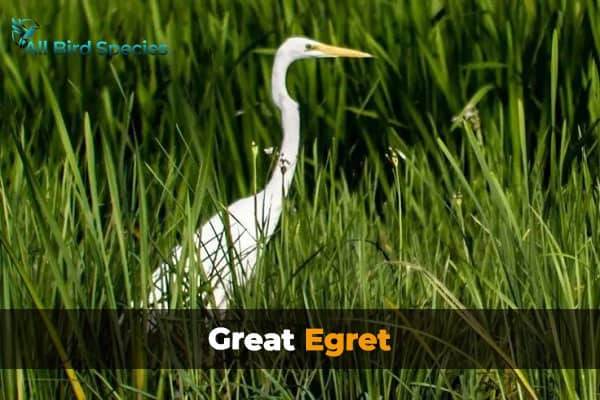
These birds are also known as Great White Herons because they’re all white. They have long, yellow bills that look like daggers and long, black legs and feet. When they’re not breeding, males, females, and young ones all look the same.
Great Egrets are pretty big:
- They’re about 37 to 41 inches long.
- They weigh around 60 ounces.
- Their wingspan is about 54 to 55 inches.
They live in many places around the world. The ones in the southern and coastal parts of the US stay there all year, but the ones that live further inland and in Canada travel south when it gets cold.
You can find them in places with water like marshes, tidal flats, and even fish ponds.
6. Trumpeter Swan
Trumpeter Swans are big white birds that live in Michigan all year. They show up on about 3% of birdwatchers’ lists in both summer and winter.
They’re known for being the biggest and heaviest birds in North America, and they can fly even though they’re really heavy.
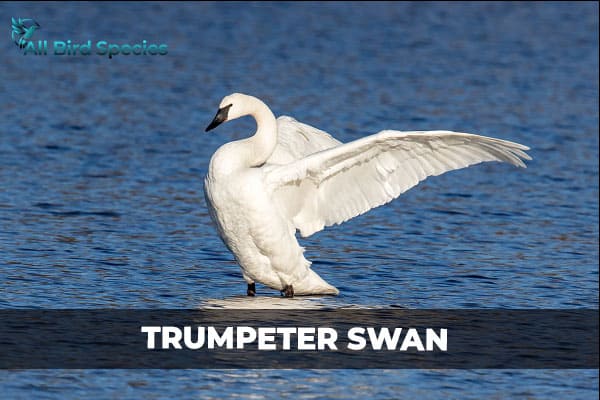
These swans are white with black bills, legs, and feet. They have a black spot that looks like it connects their eyes to their bills. Sometimes, their heads and necks get a little brown from the mud they’re in.
Young Trumpeter Swans are gray with a pink spot on their black bills.
Here’s how big they are:
- They’re about 58 to 72 inches long.
- They weigh around 401.6 ounces.
- Their wingspan is about 72 to 102 inches.
Trumpeter Swans make their homes in Alaska, western, and southern Canada, and then they go to places near the coast that don’t freeze. The ones that live in the northwestern and northern US usually stay there all year, but they might move a bit with the weather.
You can find them in wet places like marshes, lakes, and rivers, where there’s a lot of plants. They like to have their babies in open spots near shallow water. Sometimes, you can see them in fields where crops grow, too.
7. Snow Bunting
Snow Buntings are birds that you can see in Michigan during the winter, from October to May. They’re on about 2% of the lists that birdwatchers make in the winter.
These birds love the cold and live way up north in the Arctic. When it’s time to have babies, the male Snow Buntings turn mostly white with some black on their backs and wings, while the females have brown streaks on their backs and are lighter underneath.
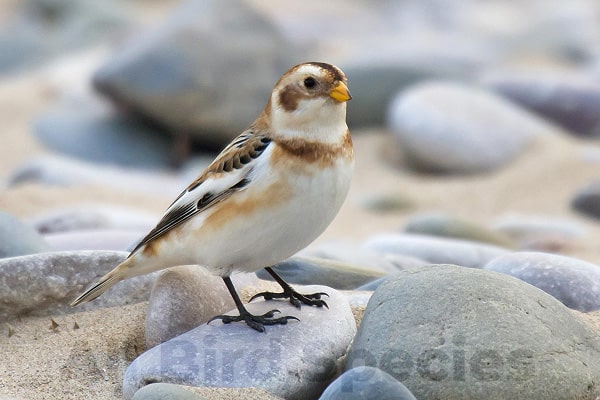
When they’re not having babies, both male and female Snow Buntings have streaked backs and white bellies, but the females have a bit more reddish color. The young ones are mostly gray with dark wings and lighter bellies.
Here’s a quick look at their size:
- They’re about 6 to 7 inches long.
- They weigh about 1 to 2 ounces.
- Their wingspan is around 12 to 14 inches.
Snow Buntings have their homes in Alaska and northern Canada, but when it gets really cold, they fly down to southern Canada and the US. You can also find them in western Europe and eastern Russia.
In the summer, they like rocky places in the Arctic with lots of plants. But in the winter, they’re hard to spot because they blend in with the snowy fields. They mostly eat weeds and seeds they find on the ground, but sometimes they eat bugs and tiny sea creatures near the ocean.
8. Tundra Swan
Tundra Swans are white swans that you can usually see in Michigan during the winter months, from October to April. They’re not very common, showing up on about 1% of the lists that birdwatchers make in the winter.
These swans have a special mark: a yellow spot near their beaks, but it’s not always there. They have white feathers all over, long necks, and their beaks, legs, and feet are black.
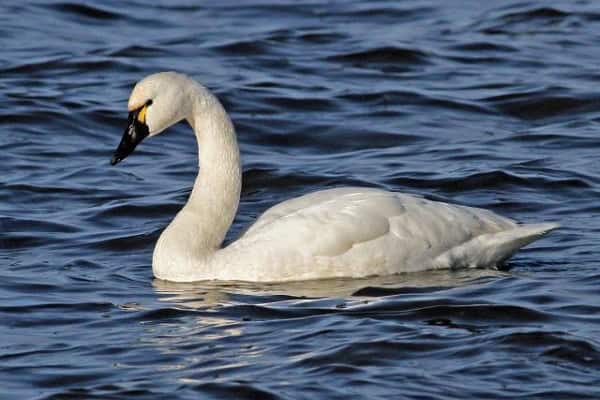
The young Tundra Swans, called juveniles, are kind of brown with white spots and have a pink and black beak.
Here’s a bit about how big they are:
- They’re about 47 to 58 inches long (there seems to be a typo in the original text, as 487 inches would be unusually large for a bird).
- They weigh about 370 ounces.
- Their wingspan is around 72 to 84 inches.
Tundra Swans make their nests mostly in Alaska and Canada. When it gets cold, they fly to the United States to stay warm.
You can find Tundra Swans in cold, open places like the Arctic tundra. They like to be around water, so you’ll see them in wetlands, marshy lakes, and places where the sea comes into the land, like estuaries and bays. They also like to be in fields where farmers grow crops.
9. Common Tern
Common Terns are birds that come to Michigan to have their babies and you can see them in about 2% of the lists people make in the summer. They get to Michigan in April and start leaving in October.
They’re not very big birds and lots of people all over North America see them. When it’s time to have babies, Common Terns have black heads and necks, white necks and chests, and gray bodies that are lighter on the bottom.
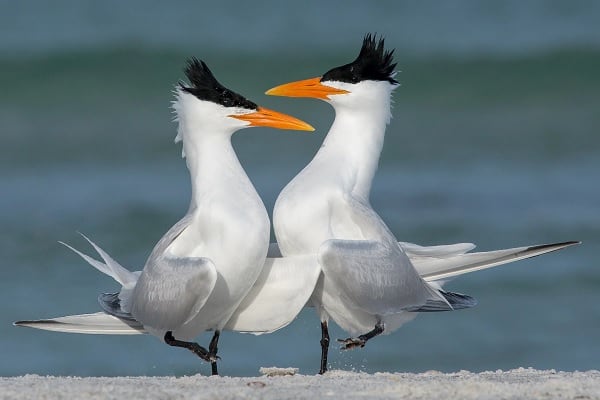
They have orange beaks with a black end and orange legs. Their wings have dark tips which make a dark shape on the top of their wings when they’re flying. Their tails are white and split deeply.
When they’re not having babies, the adult Common Terns don’t have the full black head, and their foreheads turn white. Their beaks and legs also turn black.
The young Common Terns look like the adults when they’re not having babies, but they’re lighter in color.
Here’s how big they usually are:
- They’re about 13 to 16 inches long.
- They weigh around 5.15 ounces.
- Their wingspan is about 30 to 31 inches.
Common Terns like to be near water, whether it’s a lake or the ocean, especially if the place is flat and open like a beach with sand or shells, dunes that are solid, marshes with salt, or islands. That’s where they have their babies.
In the winter, they stay where they can find fish to eat. You might see them on beaches, in places where the sea meets the land, or big lakes inside the land. They also like to rest on things floating in the water like boats, buoys, and piers.
10. Snowy Owl
Snowy Owls are at risk in Michigan, mainly spending winters here, from December to February, appearing in 2% of winter checklists. However, a few have been seen around Midland and Bay City during breeding season.
These iconic arctic owls blend into the snowy landscape, with bright yellow eyes and feather-covered legs and feet for warmth. They sport dark bars on their wingtips and incomplete bars on their tails.

Male Snowy Owls are mostly white, while females have dark flecks on their backs, wings, and flanks. Juveniles are heavily barred except on their faces, underwings, legs, and feet.
Scientifically known as Bubo scandiacus, Snowy Owls breed in the arctic worldwide, including northern Canada, and migrate to southern Canada and the northern US.
Check Our Previous Articles
11. American White Pelican
American White Pelicans are big birds with a lot of white feathers that you can see in Michigan for most of the year, especially from April to October.
They’re known for having really big wings—the second biggest of any bird in North America! When they’re not having babies, they’re all white except for some black feathers on their wings that you can only see when they fly or stretch their wings out. The young ones are a light gray color with some brown on the back of their necks.

When it’s time to have babies, the adult pelicans still have their white feathers, but they grow a yellow bump on their beaks and their eyes, beaks, and legs turn a bright orange color.
Here’s how big they get:
- They’re about 60 to 63 inches long.
- They weigh around 246.4 ounces.
- Their wingspan is huge, about 96 to 110 inches.
American White Pelicans like to have their babies on lakes that are far away from people, inside North America. When it gets cold, they go to warmer places like the southern Pacific Coast of the US, the Gulf of Mexico, Mexico, and Central America. You might see these white birds in michigan flying over the western and central parts of the US when they’re moving from one place to another.
12. Snow Goose
Snow Geese are pretty cool birds that you can see in Michigan throughout the year, but they’re around a lot more in the winter, from September to March.
The Snow Goose is mostly white, which makes sense with its name, right? But it’s not all white—it has black tips on its wings and a pink bill with a neat black mark that looks like a smile. Its legs and feet are pink too.
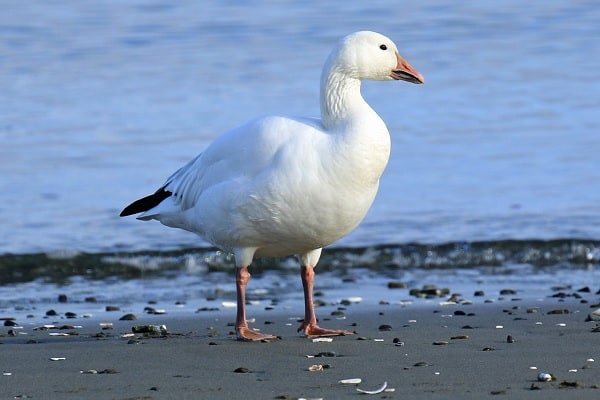
There’s also a different kind of Snow Goose called the Blue Goose. This one has a white head but the rest of its body is a dark blue-gray color. Both kinds of Snow Geese might get their heads a bit dirty when they’re eating, so they don’t always look perfectly white.
Both the white and blue geese are pretty much the same, except the boys are usually a bit bigger than the girls.
The young Snow Geese, whether they’re white or blue, are kind of a gray-brown color, but you can still tell they’re Snow Geese because of their pink bills with the black smiley mark.
13. Snowy Egret
Snowy Egrets are pretty rare in Michigan, but you might spot them in the summer, especially between mid-July and August.
These small herons are all white with yellow around their eyes, long black bills, and black legs with standout yellow feet. When they’re ready to make a family, they get fancy feathers on their heads, necks, and backs, and their faces and toes change color to reddish-pink and orange-red to impress each other.
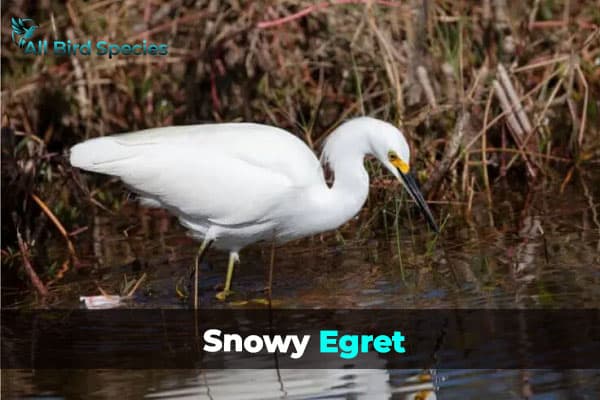
When they’re feeling feisty, those same parts of their body turn bright red!
The young Snowy Egrets look a lot like the grown-ups but don’t have the fancy head feathers, and their bill and leg colors are a bit more greenish-yellow.
Here’s a quick size check on them:
- They’re about 22 to 27 inches long.
- They weigh around 16.75 ounces.
- Their wingspan is about 39.4 inches.
Most Snowy Egrets travel away from the US, except for the ones along the Gulf and southwest coast. They like to stay all year in warmer places like Mexico, Central, and South America.
14. Ross’s Goose
Ross’s Geese are interesting birds that look a lot like Snow Geese and often hang out with them. They’re mostly white with short bills that are gray at the base and red-orange at the tip, and they have short, pinkish-red legs and feet. The tips of their wings are black. The boys and girls look alike, but the girls are a little bit smaller.

There’s also a rare kind of Ross’s Goose that’s dark-colored. It has a white head, a bill that’s brown with a red spot, and its neck, belly, and back are dark gray. It’s not very common to see this dark version, but it’s pretty neat when you do!
15. Cattle Egret
Cattle Egrets are clever birds that catch their food in a unique way. They like to stand on cattle because when the cattle walk, they stir up insects from the ground, which the egrets then snatch up.

These egrets are not very big and have short necks. They’re mostly white but have some light orange-brown spots on their heads, necks, and backs.
Here’s a bit about their size:
- They’re about 19 to 21 inches long.
- They weigh around 17.98 ounces.
- Their wingspan is between 36 to 38 inches.
Cattle Egrets can be found all over the world. In North America, the ones that live in the south, like in Mexico, the Gulf Coast, and the southwestern US, stay there all year. But the ones that live in the north, mainly in the eastern US, move south after they have their babies.
You’ll usually see Cattle Egrets in places with lots of grass, like pastures and fields where crops grow, especially if there are animals like cows around.
16. Whooping Crane
Whooping Cranes are magnificent birds known for their elegant courtship dances and distinctive trumpeting calls. Once on the brink of extinction, with only around 20 surviving in the 1940s, conservation efforts have boosted their numbers to approximately 600.
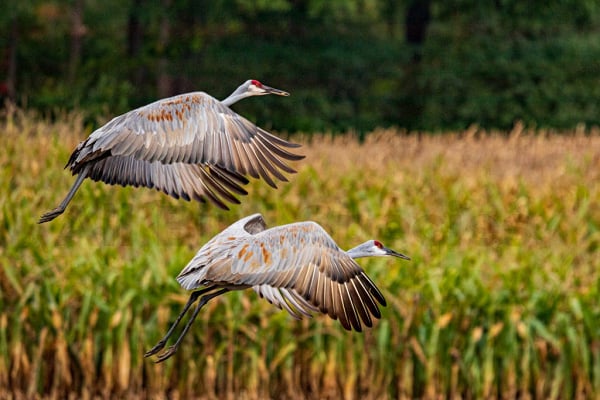
These majestic cranes boast all-white bodies, adorned with a striking red crown and a black facial mask. While perched, their black feathers are hidden, only revealing themselves in flight, accentuating their impressive 7-foot wingspan. Their long legs also sport a sleek black coloration.
17. Little Blue Heron – Juvenile
Little Blue Herons, while not commonly seen in southeastern Michigan, can be spotted during migration.
Despite their name, adult Little Blue Herons are not small birds. They actually have medium to large-sized bodies with elongated proportions. Their distinctive features include purplish heads and necks adorned with dangling feathers at the nape.

These herons have pale yellow eyes, which may transition to gray-green during breeding season. Their long, dagger-like bills are two-toned, appearing pale blue or grayish with black tips. Their bodies exhibit a slate-blue coloration, while their legs are long and range from black to gray-green in hue.
Keep an eye out for these elegant birds during their migratory journeys through southeastern Michigan!
18. Gyrfalcon
Gyrfalcons are rare sightings in Michigan, but some can be found in the northern part of the state during winter, from October to April.
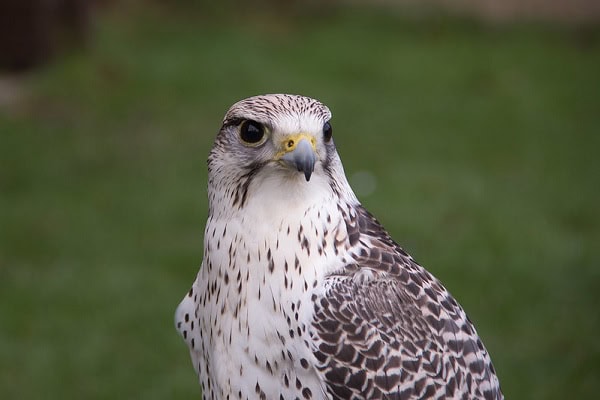
As the largest falcons, Gyrfalcons reign as apex predators in the Arctic, using their incredible speed to capture birds mid-flight or snatch prey from the ground.
Their appearance varies greatly, typically showcasing three morphs: white, silver/gray, and dark. The silver/gray morph is the most common in North America, featuring heavily banded gray and white upperparts, although some individuals may appear mostly gray without distinct banding. Their underparts are evenly spotted, with a white throat. Juveniles sport solid dark heads and a browner overall appearance.


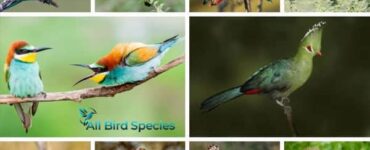


Add comment